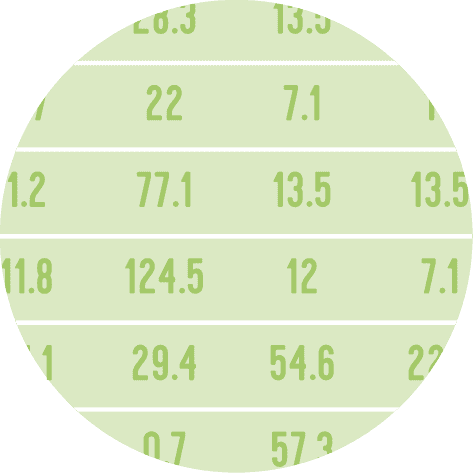Libraries
Pandas is a popular open-source Python library used for data manipulation and analysis. It provides data structures and functions that make working with structured data, such as tabular data (like Excel spreadsheets or SQL tables), easy and intuitive.
To install Pandas, you can use the following command in your command-line interface (such as Terminal or Command Prompt):
pip install pandas
Matplotlib functionalities have been integrated into the pandas library, facilitating their use with dataframes and series. For this reason, you might also need to import the matplotlib library when building charts with Pandas.
This also means that they use the same functions, and if you already know Matplotlib, you'll have no trouble learning plots with Pandas.
import pandas as pd
import matplotlib.pyplot as pltDataset
In order to create graphics with Pandas, we need to use pandas objects: Dataframes and Series. A dataframe can be seen as an Excel table, and a series as a column in that table. This means that we must systematically convert our data into a format used by pandas.
Since barplots need qualitative variables, we will create a dataset with a categorical variable.
# Create a list with 3 different categories
category = ['Group1']*30 + ['Group2']*50 + ['Group3']*20
# Store the data into a dataframe
df = pd.DataFrame({'category': category})Basic barplot
Once we've opened our dataset, we'll now create the graph. An important feature of barplots in Python is that you can't simply give them a column name as an argument.
Instead, we have to calculate the counts for each category ourselves and give them as input to the function. To do this, we simply use the pandas value_counts() function.
# Get the repartition of each category
values = df['category'].value_counts()
# Create the plot
values.plot.bar(grid=True) # Add a grid in the background
plt.show()Change bar order
To change the order of the bars, we need to do 2 simple things:
- set the desired order in a list
- use the
reindex()function to apply this order tovalues
# Get the repartition of each category
values = df['category'].value_counts()
# Define the desired order of categories
desired_order = ['Group1', 'Group2', 'Group3'] # Change this order as needed
values = values.reindex(desired_order) # Reindex the values in the desired order
# Create the plot
values.plot.bar(grid=True) # Add a grid in the background
plt.show()Change axis
If you want to change the axis of the bars, simply use the barh() function with the exact same arguments!
# Get the repartition of each category
values = df['category'].value_counts()
# Create the plot as a horizontal bar plot
values.plot.barh(grid=True) # Use barh for a horizontal bar plot
plt.show()Custom color
In the color argument, you can put either one color (like 'red') or a list of colors (check below). The list must have the same length as the number of different categories
# Get the repartition of each category
values = df['category'].value_counts()
# Define colors to use
colors = ['#69b3a2', '#cb1dd1', 'palegreen']
# Create the plot as a horizontal bar plot
values.plot.bar(color=colors,
grid=True) # Use barh for a horizontal bar plot
plt.show()# Get the repartition of each category
values = df['category'].value_counts()
# Define the desired order of categories
desired_order = ['Group1', 'Group2', 'Group3'] # Change this order as needed
values = values.reindex(desired_order) # Reindex the values in the desired order
# Define colors to use
colors = ['#69b3a2', '#cb1dd1', 'palegreen']
# Create the plot as a horizontal bar plot
ax = values.plot.barh(color=colors,
grid=True,
)
# Add title and label
ax.set_title('Customized Barplot')
ax.set_xlabel('Numbers by category')
plt.legend()
plt.show()Going further
This post explains how to customize title, axis and markers of a barplot built with pandas.
For more examples of how to create or customize your plots with Pandas, see the pandas section. You may also be interested in how to customize your barplots with Matplotlib and Seaborn.






